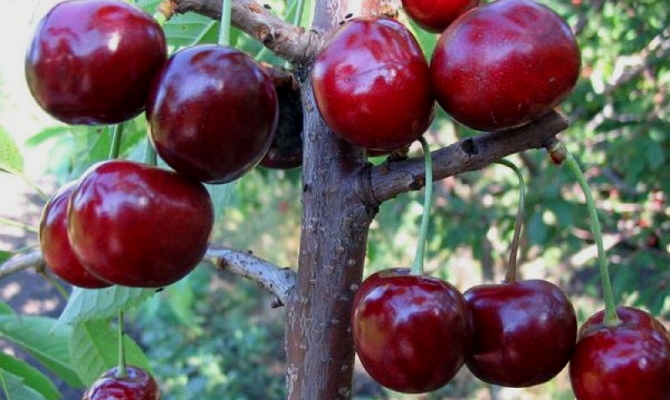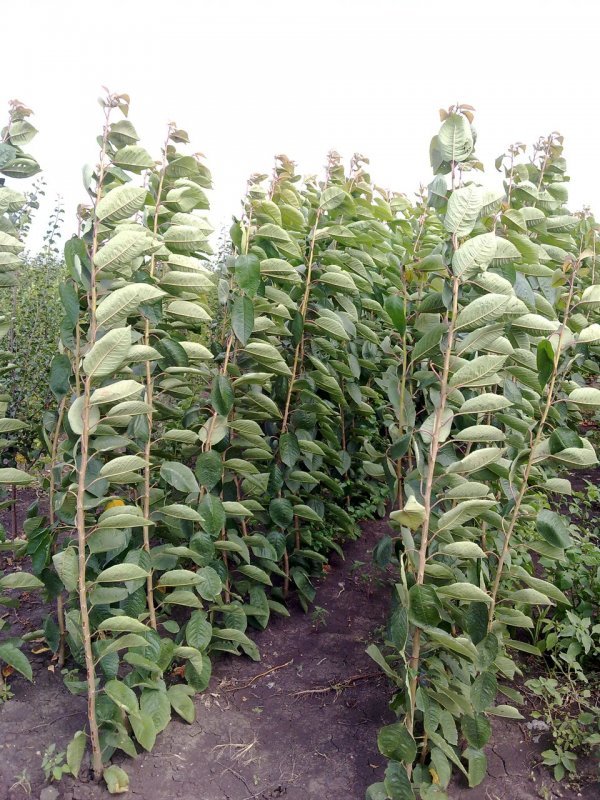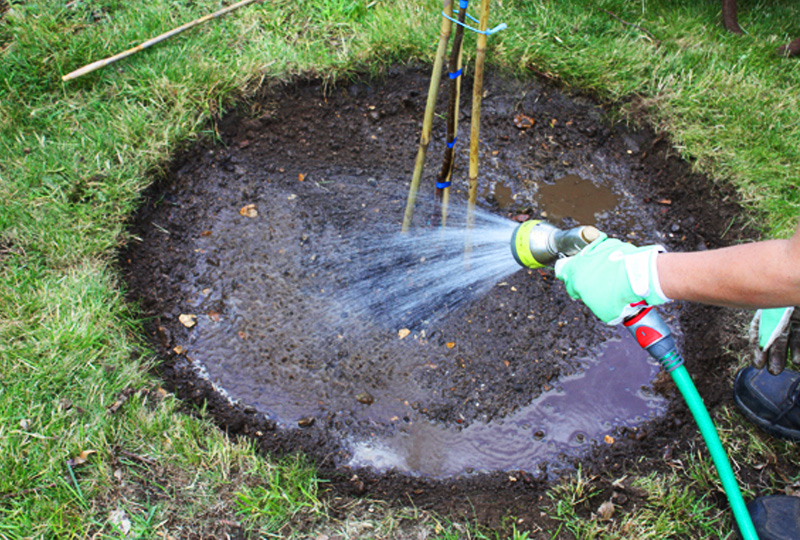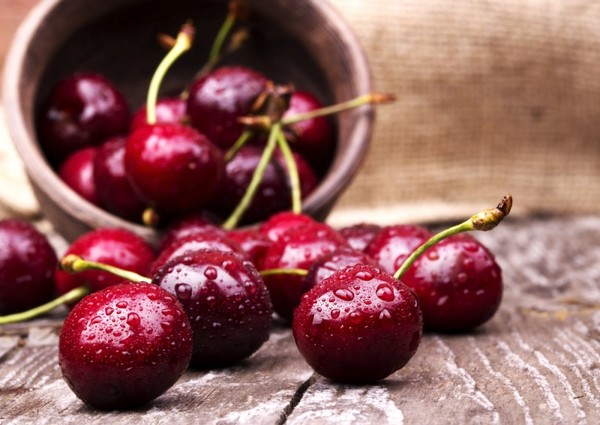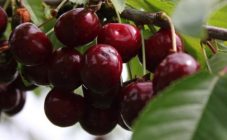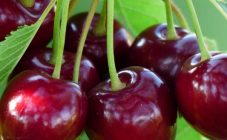Among the gardeners of the Central region of Russia, one of the most popular fruit and berry crops is the Tyutchevka cherry. On the branches of a tree of this variety, not only tasty fruits are formed, but also beautiful flowers. This variety is unpretentious, tolerates sharp temperature fluctuations, and has a high yield.
Tyutcheva cherry: description
The variety was bred at an agricultural nursery in Bryansk. It is obtained by crossing Red dense and 3-36 cherries. It was entered into the register of fruit crops of the Central region in 2001. It is a medium late species that can grow well not only in the indicated region, but also throughout central Russia and in the southern regions.
The plant has an average height (3.5-5 m). It grows rapidly, is incapable of self-fertilization. Therefore, it is necessary to artificially pollinate it. His crown is spreading, resembling a ball in shape. The hybrid is characterized by an average density of foliage. The tree begins to bear fruit 5 years after planting.
Straight and thick branches grow from the main trunk. They are colored brown. The leaves (dark green) are large. Their edges are ribbed. The buds of the hybrid are small. The inflorescences consist of 4 flowers.
Fruits are spherical, dark red in color. Inside - dense cartilaginous pulp. Their average weight ranges from 4-5 g. Under favorable conditions, gardeners receive fruits weighing up to 7 g. Berries can crack only in rainy weather.
The yield of Tyutchev's cherries during industrial planting is 200-250 c / ha.
Agrotechnics
Novice gardeners often confuse cherries and cherries. Trees are distinguished by their bark. In the first species, it is painted in gray-brown tones, and in the second, it is completely brown, with reddish tints. The branches of the sweet cherries are straight, and the seedlings themselves are of great height.
To plant and grow a hybrid, you must choose the right viable specimen according to the following characteristics:
- its age should be at least 2-3 years, it is better to take three-year-old hybrids;
- the stalk should be 0.8-1 m long, have up to four healthy shoots;
- acquire a copy with a trace of grafting on a smooth bark, as this is a guarantee that it is grown in a nursery;
- the roots of the seedling must have at least 3 shoots 20-40 cm long, in this case the seedlings will take root well on the site;
- there should be no traces of rot and brittle branches on the tree.
If the root system is dry, and its cut is colored brown, to save the sample, put it in a bucket of water for 24 hours. If these measures do not help, you will need to purchase another seedling.
An adult hybrid does not like windblown or sunlit places. Therefore, for Tyutchev's cherries, plots are chosen from the south or south-west side, it is better behind the wall of any structure - it will protect the trees from the wind.
For the seedling, loamy soil with neutral acidity is selected. It is forbidden to plant Tyutchev's cherries on clay, peat or sandy soils. This will lead to plant death.
If the soil in the garden has an increased acidity, to neutralize it, sprinkle the soil with lime (0.5 kg per 1 sq. M). For these purposes, chalk is also used. After filling the substance, the earth is dug up.If the farmer lives in the southern part of the country, it is better to plant Tyutchev's cherries in September or early October (but no later than the 15th of this month). In the middle lane, the gardener will have to carry out these works in the spring. The best time is April, until the buds swell.
The procedure is carried out as follows:
- The pit box is dug no later than a week before planting. Its depth should be 0.5-0.7 m, and its width - up to 100 cm. The distance between adjacent holes is at least 3-3.5 m, otherwise the trees will touch their crowns and shade each other. It is necessary to drive a peg next to the plant. The seedling will lean against it as it grows.
- Fertilizers are applied to the pit. For 1 cherry sapling of Tyutchev, you need 2 tbsp. l. phosphate, 1 bucket of humus, 1 tbsp. l. potassium sulfur. So that the roots of the trees do not burn, all substances are covered with a layer of earth.
- After planting, the soil around the seedlings is well compacted, watered with plenty of water, and then mulched with dry grass.
To protect the root system of Tyutchev's cherry from a burn, it is straightened, and then dipped in a clay mash.
Watering the seedlings should be regular, but in case of rain it is better to protect the plants with a film.
The first 3 years do not need to feed Tyutchev's cherries. When the tree turns 4 years old, chicken manure or rotted manure diluted with water (1:10) is introduced into the soil. For 1 sq. m of the shade of the crown on the ground, goes to a bucket of fertilizers. It is necessary to use such a top dressing no more often than once every 3 years. For Tyutchev's cherries, urea is suitable, which is added in an amount of 30 g per 1 sq. m shade of the tree crown. This procedure is carried out in the spring, when the weather is warm and it is raining.
Hybrids are protected from various diseases with special preparations that destroy fungi and microorganisms. For prevention, it is enough to carry out such work 2 times a year. To protect against pests, Tyutchev's cherries are sprayed with a solution of wood ash and soap shavings in water. If dangerous insects still appear, they are destroyed with the help of special preparations.
For normal fertilization, pollinators are planted next to the seedlings. Suitable hybrids Ovstuzhenka, Raditsa, Bryanskaya pink, Revna, Lena. If these varieties are planted on a neighboring plot, then the farmer does not have to worry about pollination - it will happen automatically.
Advantages and disadvantages of the variety
According to the description of the cherry Tyutchevka, the hybrid has the following advantages:
- wood tolerates a sharp drop in temperature to -25 °C, moreover, the seedling can not be covered;
- if the frosts intensify to -35 °C, only branches that do not have snow freeze and become brittle;
- high frost resistance allows the tree to easily recover in spring;
- fruits have good taste and long shelf life;
- You can transport the crop at any distance due to the fact that the skin perfectly protects the fruit from mechanical damage.
The disadvantages of the hybrid are as follows:
- it does not tolerate high humidity and rainy weather;
- due to waterlogging, the fruits on the trees begin to crack;
- a third-party pollinator is needed to fertilize a plant.
A novice gardener needs patience to grow Tyutchev's cherries. The harvest will not be long in coming, if all the recommendations of specialists for the care of this crop are followed. The unpretentiousness of Tyutchev's cherry made it popular not only among summer residents, but also in large farms.
